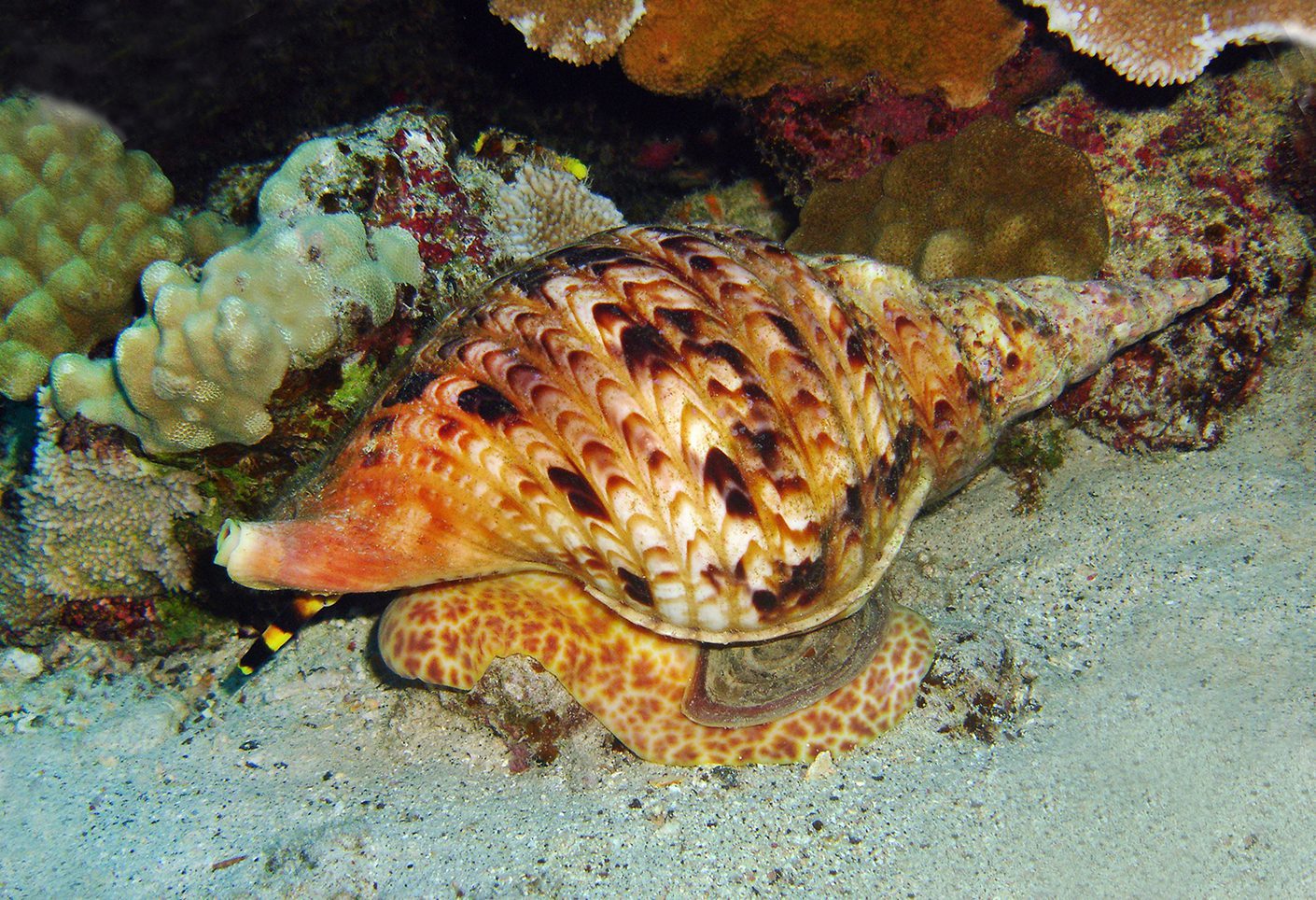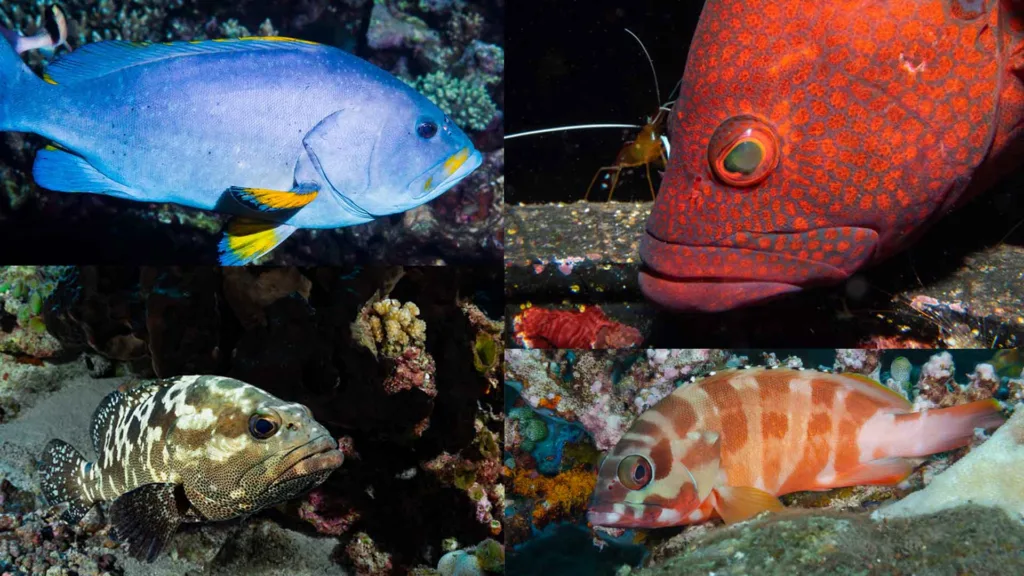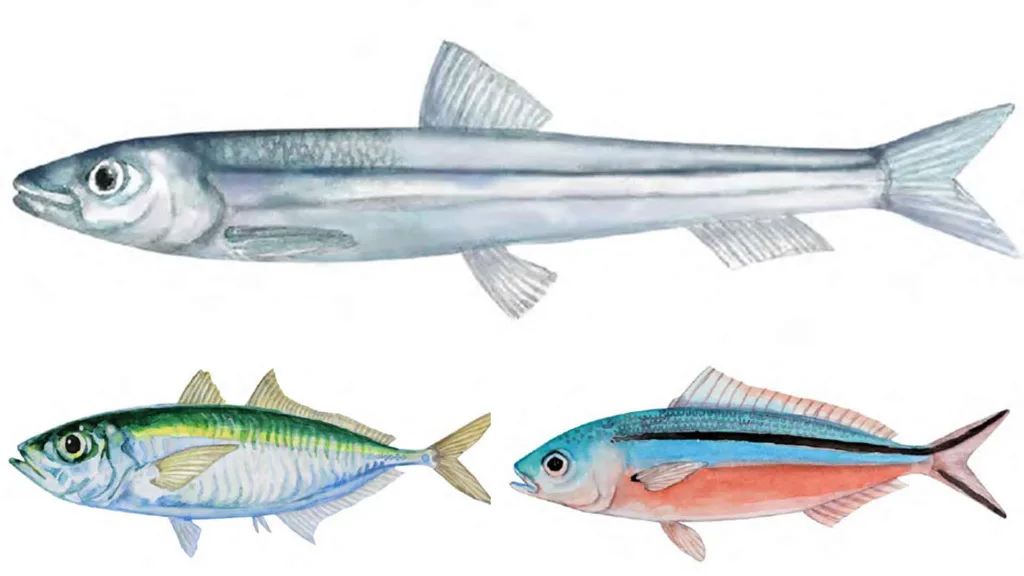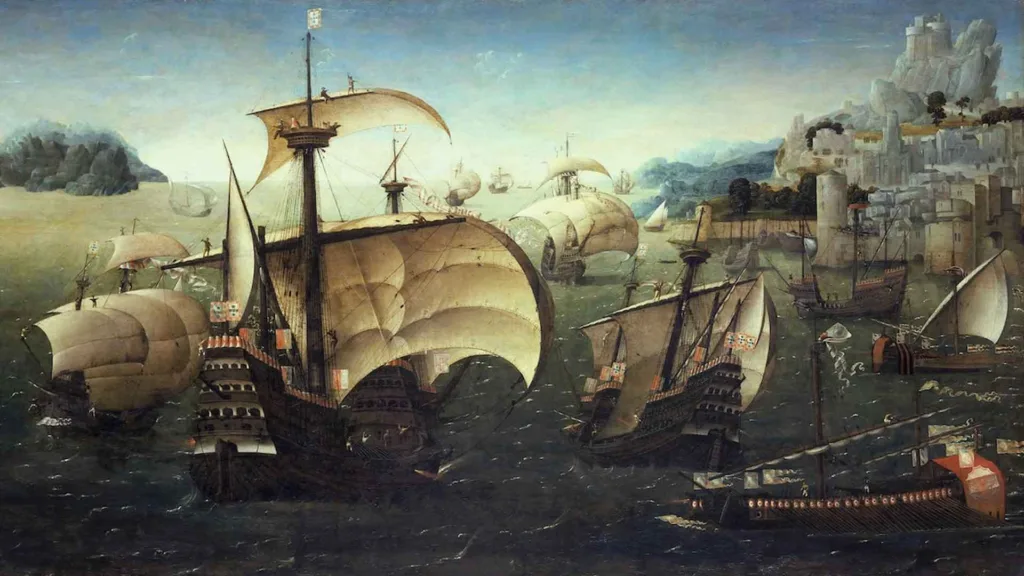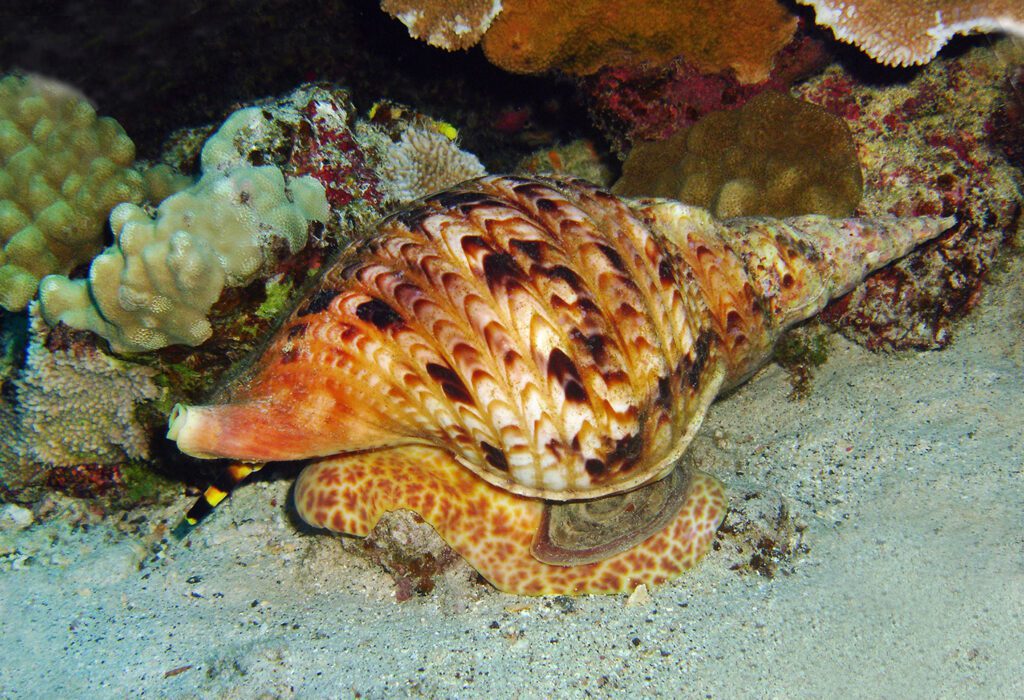
A specialist and reef defender, the giant triton (Charonia tritonis) has an intricately beautiful body. This sea snail, with its huge, spindle-shaped shell, is typically white, yellow, or brown in color. Maldivian legend holds that people who conduct black magic with the uncommon left-handed shell can achieve their deepest desires. Some people believed this shell could accomplish many incredible things. This is considered to be auspicious.
The Charonia tritonis is one of the largest marine gastropods (Motti, Cummins, Hall, 2022). It is also an echinoderm, scavengers of decaying matter on the seafloor, and they prey upon a variety of small organisms, thereby helping to regulate their numbers. They prey on the venomous Crown-of-Thorns starfish (CoTS), a periodic creature that remains a primary cause of coral mortality. They are also capable of sensing other starfish and mollusks. Although starfish can detect and attempt to run, these snails are faster.
Its powerful, muscular foot rips the skin off its prey and then secretes saliva that paralyzes it. Then it begins to slowly consume it. They consume smaller prey whole. COT outbreaks can deplete large regions of coral reefs in a short period of time. These venomous starfish have also caused a threat to Maldivian coral reefs.
Tritons typically consume only one COTS each week; hence, they are ineffective at feeding a COTS population of hundreds of thousands. Hence, a few tritons are insufficient to defend the reefs against COT.
Triton was abundant on early Maldivian coral reefs, playing a significant role in the ecosystem by guarding and sustaining the reefs. However, everything has changed. People have long collected tritons from coral reefs for sale because of the beauty of the shells. But now, more than ever, it is critical to recognize and protect this exquisite snail. The local mythology holds that the Triton, as the rightful protector of the Maldives, will rescue our coral reefs.
A study was done in 2015 by researchers at the University of the Sunshine Coast (USC) and the Australian Institute of Marine Science (AIMS). Dr. Scott Cummins, a molecular and cellular biologist, an Australian Council Future Fellow, and lead scientist at USC, claims that the enormous Triton snail produces a chemical molecule that repels the starfish.
“The big Triton snail emits an odor that is sensed by the starfish. Technically, the Triton’s odor is known as a kairomone. A kairomone odor benefits creatures that sense it, and in this case, the starfish benefits since it can escape [from the enormous Triton snail]. Using the kairomone as a slow-release mechanism could prevent starfish from accessing coral reef areas. It may also cause starfish to relocate into open regions, allowing for a faster injection of a poison currently used by divers to kill them,” Dr. Scott Cummins outlined how the hormone could be used to control starfish.
Our ecosystem suffers when we interfere with nature. We are so enamored with the triton’s beauty that we are willing to destroy it for personal benefit. And we use the shells to satisfy our desires through black magic or various incarnations. The end result is that the ecosystem is destroyed. We irresponsibly enact laws and regulations to preserve the critical ecology we are building for survival.
